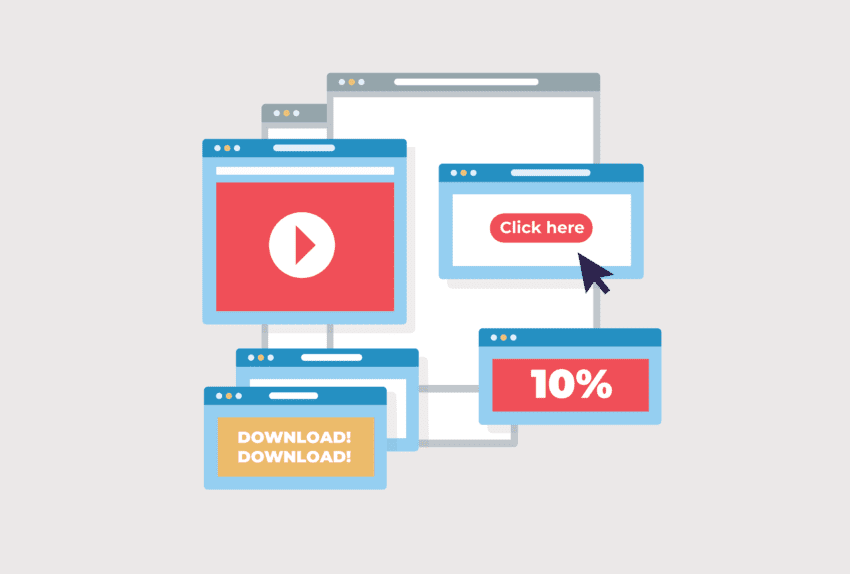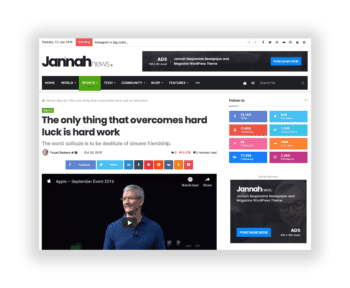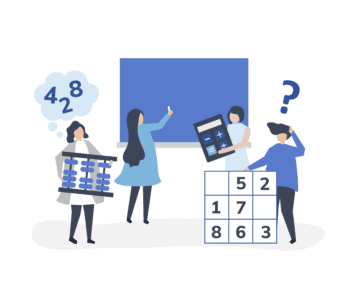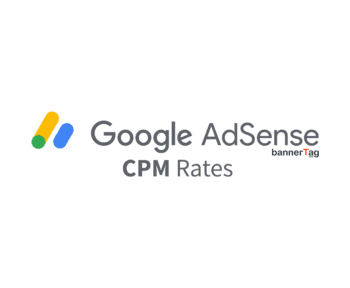When it comes to best desktop ad sizes there is no way around it. You want your website to look pretty but at the same time you wish you could earn more revenue. For desktop the best ad sizes can often be surprising in dimensions and just by adding a few pixels you could be earning a lot more.
There are many different solutions for increasing revenue out there and this can get confusing very quickly. Usually if you are using an already established partner that for example uses header bidding solution they will already have some data on what would be the best desktop ad sizes for your specific website. For example Adsense has some pre defined dimensions that you can use, but how to know which are the best. If positioned well the wide banner sizes can earn you significantly more. There are products out there that support automatic responsive ads but they are not always the best as some advertisers might use a specific unresponsive size and actually pay more.
It is important to first look at what the official partners are suggesting and then testing which works best. For desktop there are only a few best paying desktop ad sizes that you would need to use and not to confuse yourself with dimensions that bring less revenue.
Best Desktop Ad Banner Sizes Suggested by Officials
To begin with let’s look at fixed ad banner sizes for desktop. The best way to get started is just by looking at the standards defined by the largest official advertising companies. Let’s have a look at three such organisations and see if we can find some crossovers.
IAB Ad Sizes
IAB (Integral Ads Science) is an advertising business organisation that creates and develops industry standards, conducts researches. The company provides legal services and support for the online advertising industry and is the leading company to do so. This means that we should trust this organisation and primarily look at their suggested desktop sizes.
IAB fixed size ad specifications.
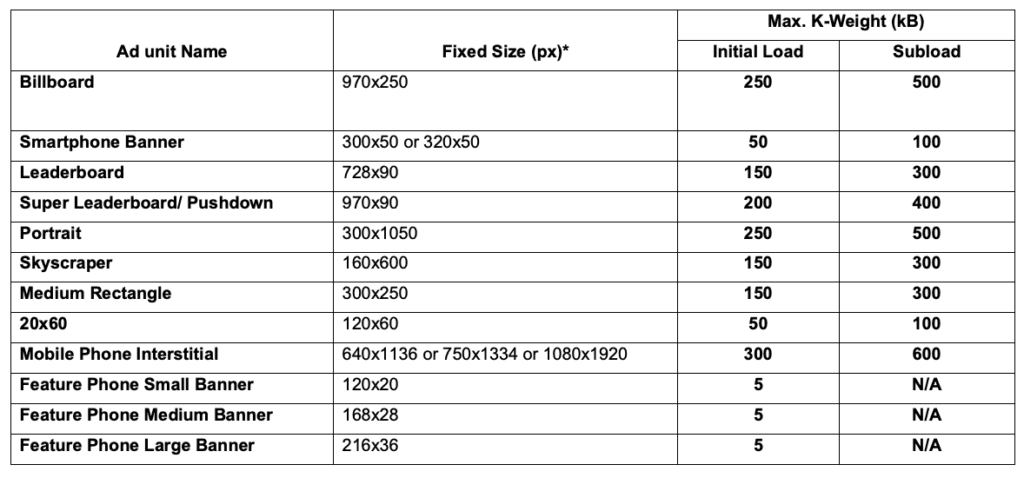

While the list shows the official sizes it does not really suggest which ones are the best paying and would bring in the highest possible revenue. Most official websites and advertisers try to stick to the IAB suggestions therefore we should keep in mind what ad dimensions they suggest. Let’s come back to this later.
Google Desktop Ad Sizes
According to Google the best ad sizes are the following: 300×250, 336×280, 728×90 and 160×600.
Sounds fine, right? Well, if we look at the rising ad formats then 970×250 billboard is said to be IAB Rising Star**; high demand in Preferred Deals and Private Auctions – meaning they work great in Header Bidding. Not only that – 300×600 half-page ad is one of the fastest growing sizes by impressions and is indicative of a trend where publishers are offering more visually impactful ad sizes that are preferred by brand advertisers. 970×90 large leaderboard is on the rise as well and advertisers see it as an ideal size for high definition content ads.
Considering all of the mentioned sizes, this is what google suggests we use:
- 300×250 – Square
- 336×280 – Large Rectangle
- 728×90 – Leaderboard
- 160×600 – Wide Skyscraper
- 970×250 – Billboard
- 300×600 – Half Page Ad
- 970×90 – Large Leaderboard
SmartyAds
Founded in 2013, London UK. SmartyAds provides a full-stack package of complex AdTech solutions for digital advertisers, publishers, and ad agencies worldwide. According to SmartyAds the best desktop ad sizes are:
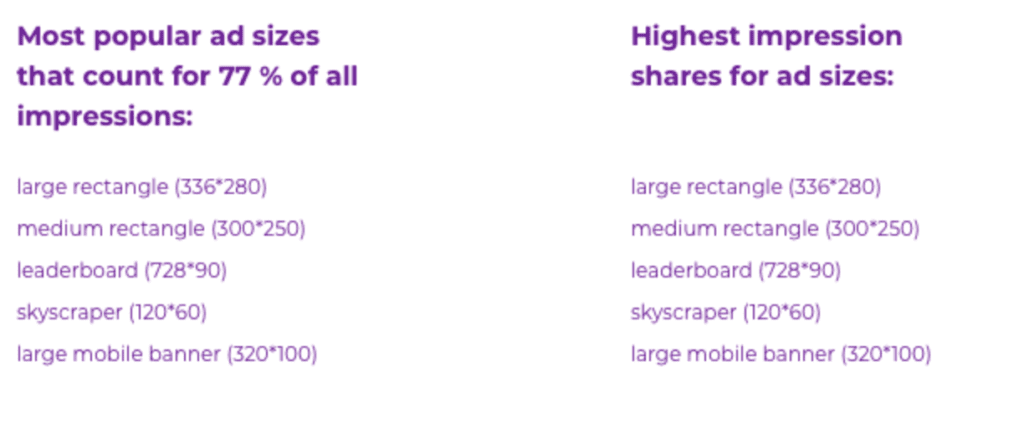

Based on the data from SmartyAds the best ad sizes for desktop are 336×280, 300×250, 728×90, 120×600. The higher the impression share for ads, the bigger the competition therefore pushing the eCPM (revenue per thousand impressions) higher.
Trust Advertisers
It is important to also be aware of what advertisers see as the best performing, therefore paying more. Let’s have a look at what Google AdWords is suggesting as the top performing ad sizes.
These are the most common AdWords desktop ad sizes:
- 250×250 – Square
- 200×200 – Small square
- 468×60 – Banner
- 728×90 – Leaderboard
- 300×250 – Rectangle
- 336×280 – Large Rectangle
- 120×600 – Skyscraper
- 160×600 – Wide Skyscraper
- 300×600 – Half-Page Ad
- 970×90 – Large Leaderboard
While those sizes are the most common, not all of them are the top performing. Here is a list of the best Adwords desktop ad sizes according to Google:
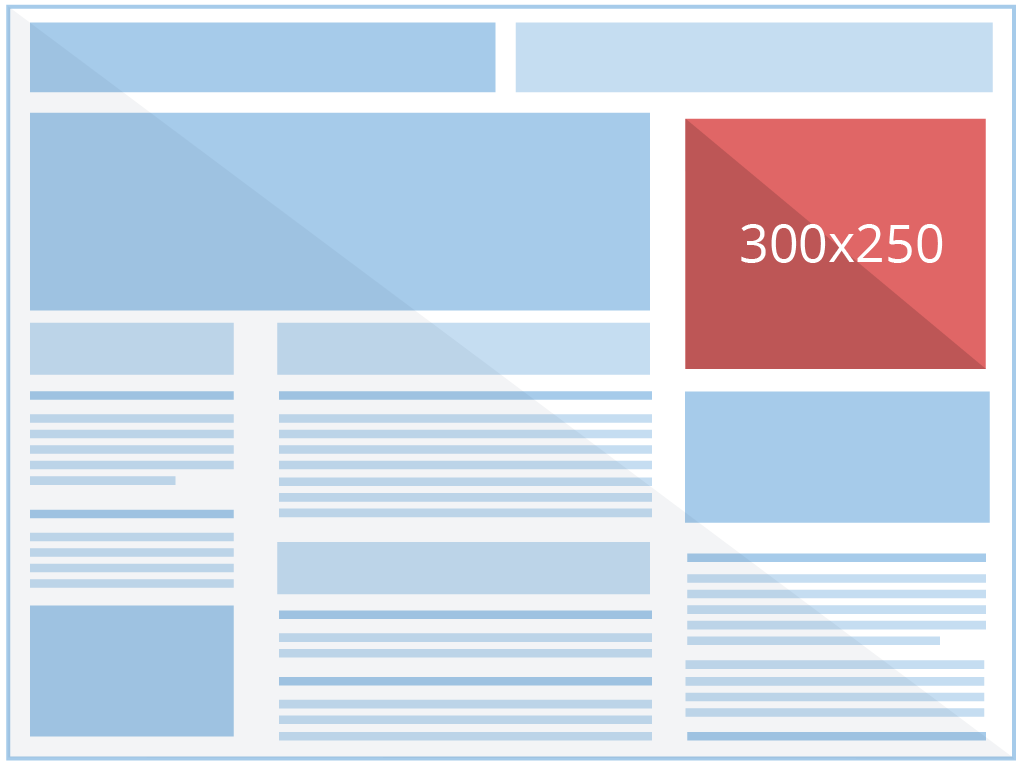

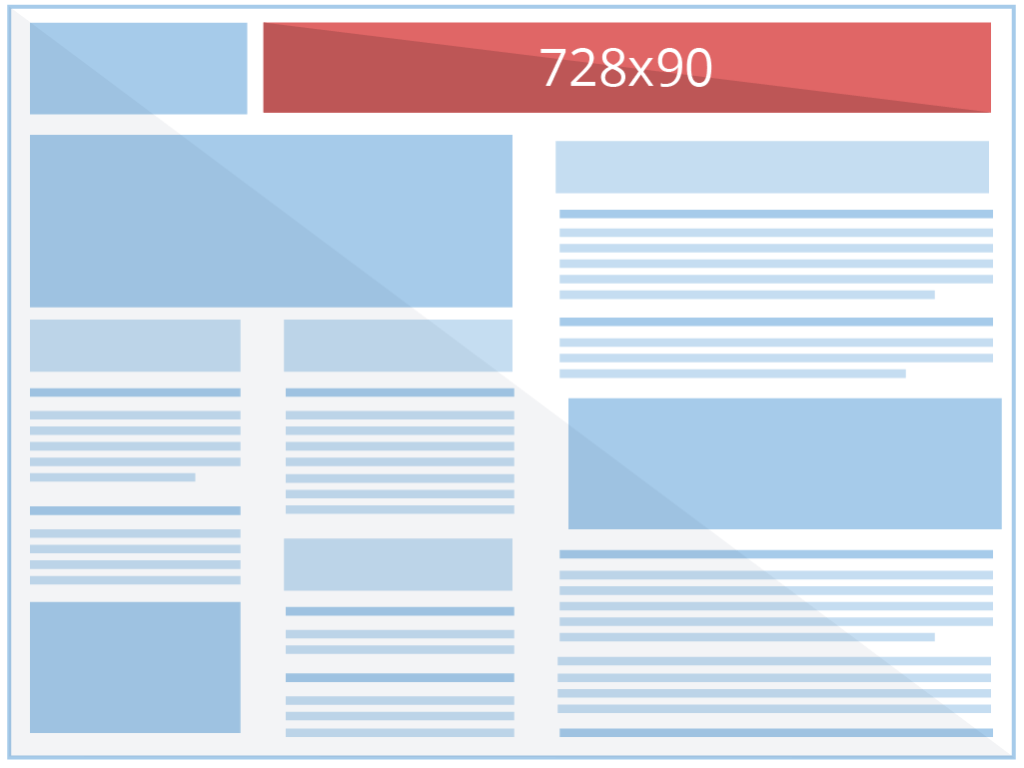

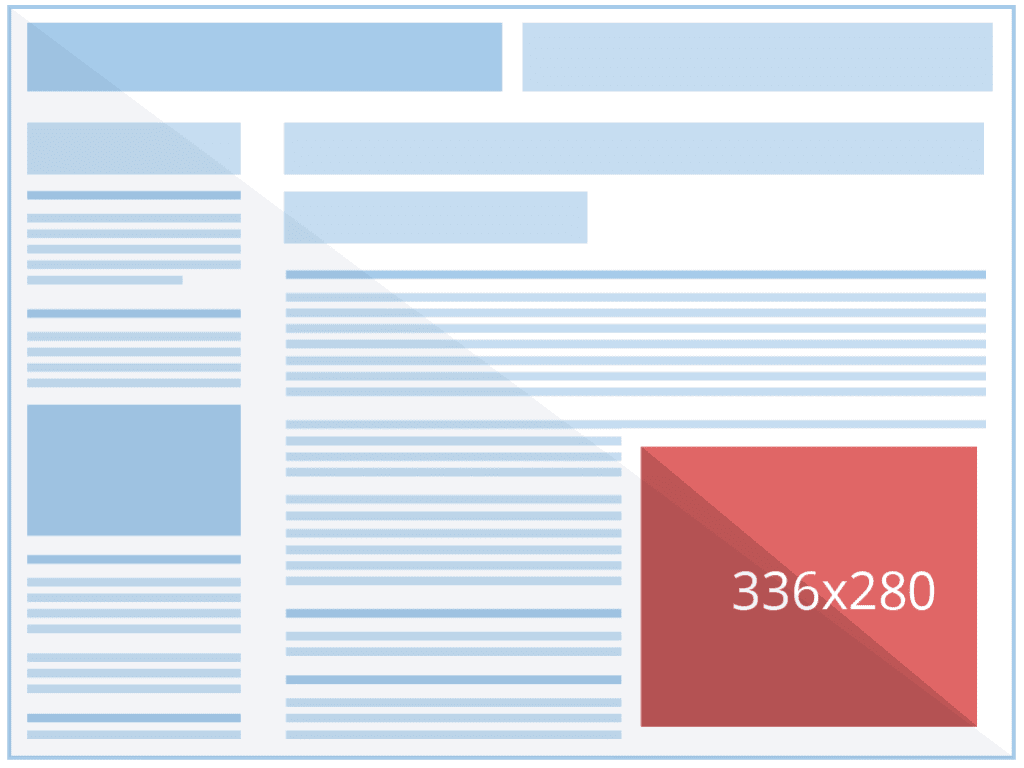

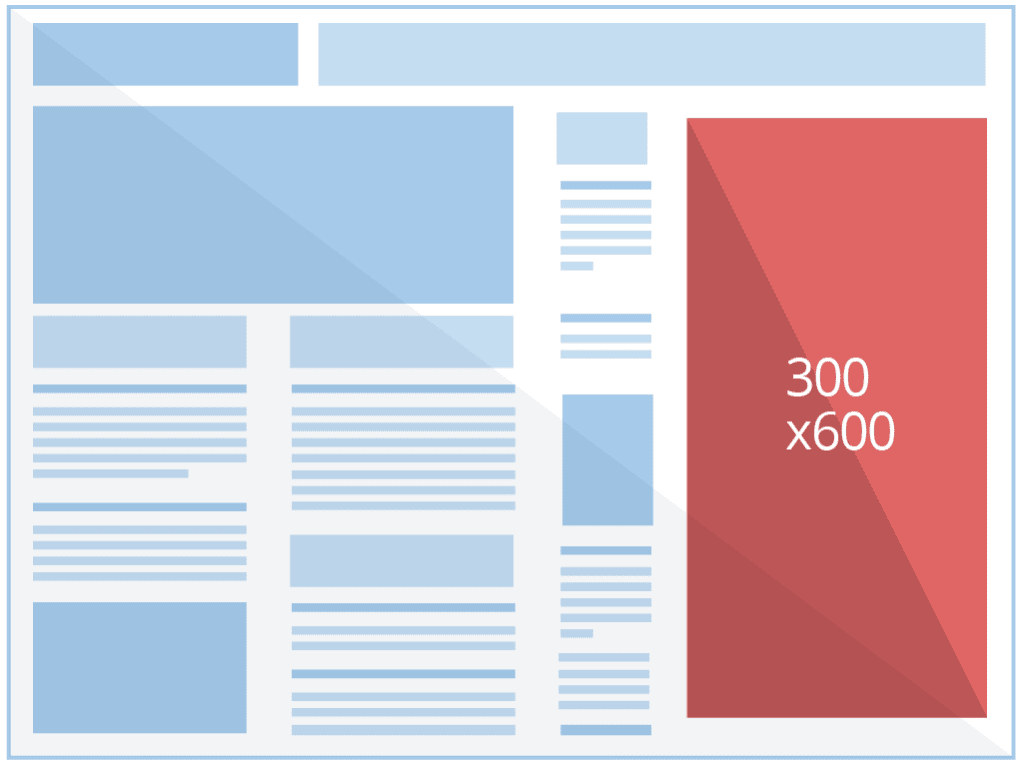

How about native ads?
It is great to combine banner ads with native ads to give the best user experience while earning the most revenue. They fit nicely within any website and layout as they are easy to customise to fit any needs. Usually a visitor does not even notice them and ad blocker might not block it. Below are examples of how well these ads fit within the layout of the page.
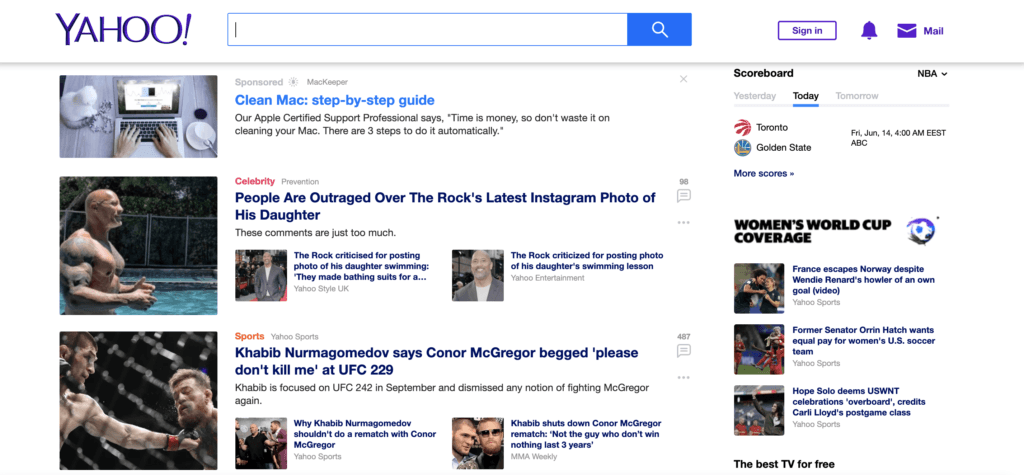

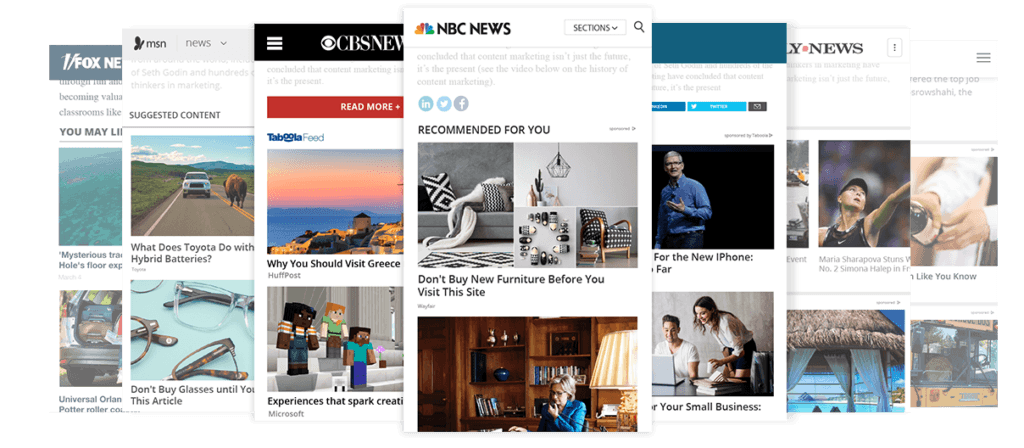

If you are not sure what Native Ad network to use you can have a look what we suggest are the best ad networks at the moment.
Where to go next
To be sure you are putting the best ad sizes possible we suggest to do A/B testing, for example placing a 729×90 on top of the page for one week and 970×250 for another. This can be done for all sizes and places of the website.
Conclusion
In a combination with native ads we suggest to use the following desktop ad banner sizes where possible.
- 970×250 – Billboard
- 300×600 – Half-Page Ad
- 336×280 – Large Rectangle
- 300×250 – Rectangle
Why not 728×90 in the place of 970×250 – everyone suggested it right? Well, most ad network solutions will rotate the ad sizes and allowing the biggest possible banner will let them know that in the space of 970×250 also 728×90 and 970×90 is allowed therefore displaying a size that is the best paying at that certain time for that user. Same goes for 300×600 as it will allow (120×600, 160×600, 300×250,300×300) to rotate.
We suggest to run 300×600 on the side as a sticky banner, therefore increasing view-ability %, CTR and eCPM. This is better than placing multiple side banners as the revenue just splits between them, whereas just placing one sticky will make advertisers happy making them pay more.
Place 300×250/336×280 in articles, the best scenario would be in the text after a certain amount of paragraphs for example repeating after every 2. – Test what works best for you.
Where to place native ads? Usually they are placed at the bottom after each article together with “recommended to read” posts. This will generate great clicks as user is engaged in your content and wants to read more therefore also clicking on sponsored links.
What else can be done?
Look at the biggest websites that are similar to your and check the sizes, positions and placements. We suggest to use plugins such as Page Ruler to measure the ad dimensions. Here is an example of buzzfeed banner sizes and positions.
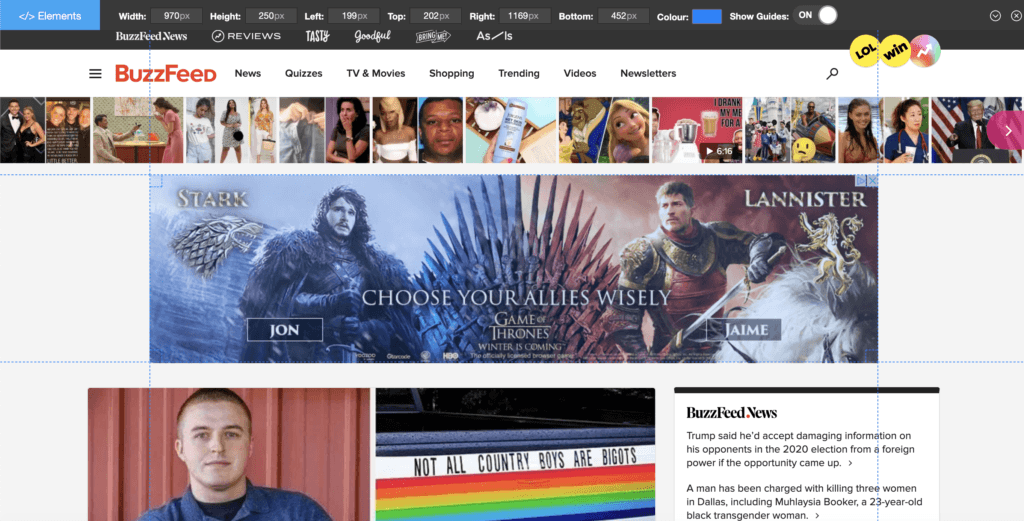

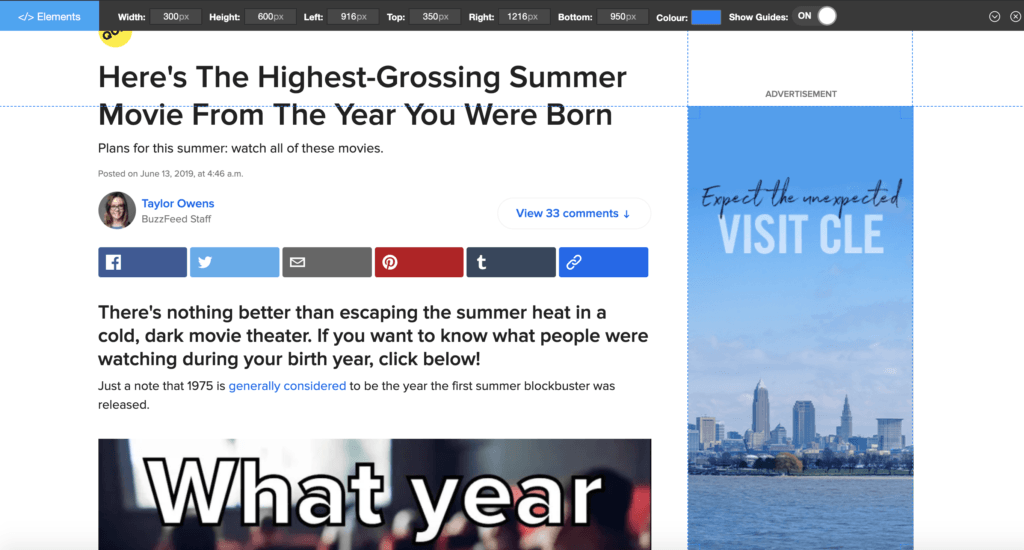

Here we can see that buzzfeed is using 970×250 as the top banner and 300×600 right side sticky as the main sidebar banner. If you refresh the page multiple times you will be able to notice that the sizes are changing – the best paying is displayed.


